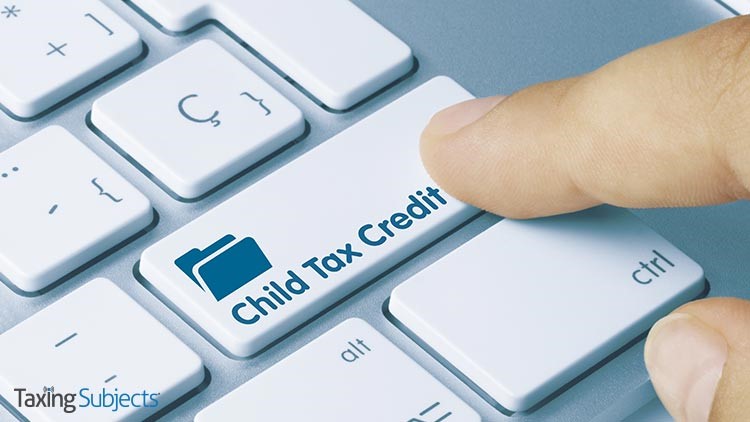by | Jun 19, 2021 | Tax Tips and News
The IRS announced that it is now also offering online tax information in Spanish, Chinese (simplified and traditional), Korean, Russian, Vietnamese, Haitian-Creole, and more.
IRS.gov web pages have links to available translations on the right side, just below the title. Taxpayers can also click on the language dropdown arrow at the top of many IRS.gov pages, displaying the current language and listing other available translations.
What are the affected online resources?
The IRS has a Languages page where visitors can get basic tax information, such as how to check the status of a refund, pay taxes or file a federal return. The page is available in 20 languages.
The Let Us Help You page is available in seven languages.
A number of tax forms offer translation into multiple languages. The Form 1040, for example, has a Spanish language version which includes its related instructions.
The Form 1040 Schedule LEP, in English and Spanish, with instructions in English and 20 other languages, can be filed with a tax return by taxpayers who would rather communicate with the IRS in a language other than English.
A number of different tax forms and publications, such as Publication 17, Your Federal Income Tax, are available in Spanish, Chinese Simplified, Chinese Traditional, Korean, Russian and Vietnamese.
Information on Economic Impact Payments can be viewed on IRS.gov in seven languages. The Get My Payment tool, which checks the status of an Economic Impact Payment, is only available in English and Spanish at this time.
Taxpayers looking for information on the 2021 Advance Child Tax Credit payments can find it in any one of seven languages. The Taxpayer Bill of Rights, as outlined in Publication 1, Your Rights as a Taxpayer, is also available in seven languages.
IRS social media diversifies
It seems everybody has an app these days, and the IRS is no different. Their IRS2Go app is available in English and Spanish from the Amazon App store, the Apple App Store or Google Play.
The IRS’ YouTube channel is multilingual, offering helpful videos covering a wide array of tax topics.
The IRS Facebook page is available in Spanish, and anyone can get the latest IRS tax news and information in Spanish through the Twitter account @IRSenEspanol.
The IRS has also has created individual Twitter Moments in six languages, highlighting key messages in Spanish, Vietnamese, Russian, Korean, Haitian Creole and Chinese.
To get news releases, tax tips and other updates in Spanish from the IRS, taxpayers can subscribe at Noticias del IRS en Español.
Assistive technology formats are available
IRS.gov offers content in a variety of file formats to accommodate those using assistive technology, including screen-reading software, refreshable Braille displays and voice recognition software.
Hundreds of tax forms and publications can be downloaded and viewed in text-only, Braille-ready files, browser-friendly HTML, accessible PDF and large print. Any software that reads text can open and read these text files.
For details, visit the Accessibility page of IRS.gov.
Source: IRS offers information and resources in a variety of multilingual and alternative formats.
– Story provided by TaxingSubjects.com
by | Jun 18, 2021 | Tax Tips and News
The Internal Revenue Service has rolled out a new online tool that’s built to help families register for monthly Advance Child Tax Credit payments. The tool is tailored to the needs of families who are eligible for the advance payments, but don’t normally file an income tax return.
The Non-Filer Sign-Up tool, though, does more than just register taxpayers for the CTC payments. It can also help these taxpayers register for the third round of Economic Impact Payments or claim the Recovery Rebate Credit for any of the first two rounds of EIPs they may have missed.
The challenge for the IRS is to get eligible individuals who don’t normally make enough income to file a yearly tax return to give their information to the agency so they can actually receive the CTC advance payments. The IRS needs the basic information—such as name, address, Social Security numbers and information on dependents—to figure and issue the CTC advances.
IRS Commissioner Chuck Rettig says many times, these individuals and families may have little or no income; they may even be experiencing homelessness, or be a part of another underserved group.
“We have been working hard to begin delivering the monthly Advance Child Tax Credit to millions of families with children in July,” said Commissioner Rettig. “This new tool will help more people easily gain access to this important credit as well as help people who don’t normally file a tax return obtain an Economic Impact Payment. We encourage people to review the details about this important new effort.”
No action needed by most eligible taxpayers
The new tool should not be used by families who’ve already filed—or plan to file—2019 or 2020 income tax returns. Also, those who want to claim other tax credits, such as the Earned Income Tax Credit (EITC) for low- and moderate-income families, shouldn’t use the online tool, but should file a regular tax return instead.
The IRS also reminds that there are scams related to the Advance Child Tax Credit payments and Economic Impact Payments. The only way to get either of these payments is to either file a tax return with the IRS, or to register online using the Non-Filer Sign-Up tool. It is available only on IRS.gov. Any other option is a scam.
For more information on the Advance Child Tax Credit payments, check out our Taxing Subjects blog.
More tools are on the way
The IRS says it will update its Advance Child Tax Credit 2021 page in the coming weeks with some new tools, including:
- An interactive Child Tax Credit eligibility assistant to help families determine whether they qualify for the Advance Child Tax Credit payments.
- Another tool, the Child Tax Credit Update Portal, will initially enable anyone who has been determined to be eligible for advance payments to see that they are eligible and unenroll or opt out of the advance payment program. Later, it will allow people to check on the status of their payments, make updates to their information and be available in Spanish.
Source: IRS unveils online tool to help low-income families register for monthly Child Tax Credit payments.
– Story provided by TaxingSubjects.com
by | Jun 16, 2021 | Tax Tips and News
The American Rescue Plan (ARP) put some sweeping changes in place to help the U.S. tax code deal with the effects of the coronavirus pandemic. To help provide guidance to families and small business who might claim some of ARP’s major credits, the IRS has issued two sets of frequently asked questions or FAQs.
The American Rescue Plan modified the Child and Dependent Care Credit as well as the Paid Sick and Family Leave Credit to give some help to families and small-to-mid-sized businesses coping with the economic fallout of the pandemic.
The two separate sets of FAQs have information on eligibility, how to calculate the credits, and how to claim the credits.
Here’s a breakdown.
Child and Dependent Care Credit
The American Rescue Plan made some major changes to the credit for 2021, raising the cap on work-related expenses for qualifying care when the credit is figured. Eligible taxpayers in 2021 can claim qualifying work-related expenses up to:
- $8,000 for one qualifying person, up from $3,000 in prior years, or
- $16,000 for two or more qualifying persons, up from $6,000 in prior years.
The IRS notes that “taxpayers are also required to have earnings,” and “the amount of qualifying work-related expenses claimed cannot exceed the taxpayer’s earnings.”
ARP also boosts the maximum percentage of expenses that can be applied to the credit. It also changes how the credit phases out for taxpayers with higher incomes, while making the credit refundable for those who qualify.
With a maximum credit rate of 50%, those with the maximum amount of work-related expenses would qualify for $4,000 credit for one qualifying person; $8,000 for two or more.
A qualifying person for this credit is defined as a dependent, under the age of 13 – or a dependent of any age or a spouse who’s incapable of taking care of themselves and who lives with the taxpayer for more than half the tax year.
Employer-provided benefits for dependent care have to be subtracted from total work-related expenses when calculating the credit. This would include expenses paid from a flexible pending account.
The American Rescue Plan is expected to increase the number of taxpayers who qualify for the credit.
The percentage of work-related expenses allowed when figuring the credit goes down as the taxpayer’s income goes up. This hasn’t changed from prior years. But ARP does open the door to more qualified taxpayers with its new maximum 50% credit rate.
The new law pushes the beginning of the credit’s phaseout to $125,000 in adjusted gross income. At that point, the 50% credit percentage starts to go down as income goes up, drying up altogether for those who earn more than $438,000 for the year.
This credit is fully refundable for the first time in 2021, meaning a taxpayer can get the credit even if they don’t owe any federal tax.
Eligible taxpayers must live in the United States for more than half the year, although special rules are in place for American military personnel who are stationed outside the U.S.
Form 2441, Child and Dependent Care Expenses, is used to claim the credit for 2021. Taxpayers claiming the credit will need a Social Security number or a valid taxpayer identification number (TIN) for each qualifying person.
Refer to the instructions for Form 2441 for more information.
Paid Sick and Family Leave Credits
Employers who provide paid sick and family leave to their workers related to COVID-19 circumstances can get reimbursed through the Paid Sick and Family Leave Credit. This same credit is open to self-employed individuals.
The credit qualifies employers who allow paid time off due to illness from COVID-19, time off to care for a family member with COVID-19, even time off related to receiving the COVID-19 vaccination shots.
For this credit, the American Rescue Plan stands on the shoulders of legislation that went before to give employers some help for providing benefits to their workers.
The Families First Coronavirus Response Act (FFCRA) and the COVID-related Tax Relief Act of 2020 provided the foundation that ARP amends and extends.
ARP specifically expands the existing code to allow the credit in cases where the employee is waiting for a diagnosis or test for COVID-19, getting a COVID-19 vaccine, or recovering from the effects of a vaccine.
In addition, ARP allows eligible employers to claim the credit for paid family leave wages for all the same reasons as paid sick leave wages.
The IRS FAQs help employers with information on how they can claim the paid sick and family leave credits, how to file for the credits, calculate the credit amounts—most importantly for some employers, how to get advance payments or refunds of the credits.
ARP paid leave credits are tax credits against the employer’s share of Medicare tax. The credits are refundable, meaning the employer is entitled to the full amount of the credit to the extent it exceeds the employer’s share of Medicare tax.
Eligible employers can anticipate the credits they claim by withholding the federal employment taxes they would have deposited otherwise. This includes federal income tax withheld from workers, the workers’ share of Social Security and Medicare taxes, and the employer’s share of Social Security and Medicare taxes for all employees up to the amount of their share of the credit.
If the employer doesn’t have enough federal employment taxes on deposit to cover the anticipated credits, the employer can ask for an advance of the credit using Form 7200, Advance Payment of Employer Credits due to COVID-19.
Comparable credits can be claimed by self-employed taxpayers using Form 1040, U.S. Individual Income Tax Return.
The tax provisions of the American Rescue Plan has more information. Details can be found in the other provisions to help taxpayers recover from pandemic impacts. Check out the FAQs on those and other provisions.
Source: IR-2021-128
– Story provided by TaxingSubjects.com
by | Jun 13, 2021 | Tax Tips and News
The Internal Revenue Service says it sent out millions of additional American Rescue Plan (ARP) payments to taxpayers in just a two-week period, pushing the total number of payments issued under the new law to just under 170 million.
The IRS teams with the Department of the Treasury and the Bureau of the Fiscal Service to send out the Economic Impact Payments (EIPs). The three agencies say some $395 billion has been distributed since the ARP payments started on March 12.
The effort, designed to keep the American economy going and recover through the course of the COVID-19 pandemic, has generated impressive numbers to date:
- In total, this latest round includes more than 2.3 million payments with a value of more than $4.2 billion.
- More than 900,000 payments, with a value of approximately $1.9 billion, went to eligible individuals for whom the IRS previously did not have information to issue an Economic Impact Payment but who recently filed a tax return.
- This also includes additional ongoing supplemental payments for people who earlier this year received payments based on their 2019 tax returns but are eligible for a new or larger payment based on their recently processed 2020 tax returns. In the last two weeks, there were more than 1.1 million of these “plus-up” payments, with a value of more than $2.5 billion. In all, the IRS has made more than 8 million of these supplemental payments this year.
- Overall, the last two weeks of payments contain more than 1.2 million direct deposit payments (with a total value over $2.2 billion) with the remainder as paper check payments.
The IRS notes that more Economic Impact Payments are being sent out weekly. Payments continue to be sent to those who didn’t previously have information with the IRS, but recently filed a tax return, and to those who qualify for “plus-up” payments.
Filing opens the door to EIPs
For most Americans, getting an Economic Impact Payment was an automatic event; because they had filed an income tax return, the IRS had the information necessary to get an EIP to them quickly and accurately.
That said, there are a significant number of people who haven’t filed a tax return in years and so are “under the radar” to get any of the government payments they might otherwise qualify for.
By not connecting with the IRS, these individuals may be missing out on benefits such as the 2020 Recovery Rebate Credit, the Child Tax Credit or the Earned Income Tax Credit.
Filing a 2020 return – even if the filer traditionally doesn’t need to file – can help the IRS determine if the person is qualified for EIPs and other tax benefits and give the agency contact information to help get the payment to the filer.
This summer, the IRS will add another reason for non-filers to send in a return: advance payments of the 2021 Child Tax Credit will start to go out, based on information in a 2020 return.
Filing also gives the IRS information it needs to send out payments for a qualifying dependent.
Individuals who don’t get federal benefits and don’t have an obligation to file a tax return still need to file so they can qualify for Economic Impact Payments. This includes those who are experiencing homelessness and others.
Those who didn’t get one of the earlier Economic Impact Payments—or got less than the full amounts—could qualify for the 2020 Recovery Rebate Credit, but will have to file a 2020 tax return to get the credit.
Go to the special section on IRS.gov, Claiming the 2020 Recovery Rebate Credit if you aren’t required to file a tax return, for more information.
The qualifying income levels are different for EIP3
It should be noted that the top qualifying income levels have been changed for the third round of Economic Impact Payments. This means some people won’t qualify for the latest EIP even if they received one of the earlier payments or claimed the 2020 Recovery Rebate Credit.
Taxpayers making $75,000 or above in Adjusted Gross Income (or $150,000 for married couples filing jointly) will see their EIPs reduced. The phase-out is complete for taxpayers who make more than $80,000 ($160,000 for married filing jointly). Those who make more won’t qualify for the EIP.
More information on Economic Impact Payments is available on IRS.gov. The Get My Payment tool can show the status of payments.
Source: More than 2.3 million additional Economic Impact Payments disbursed under the American Rescue Plan; total payments top 169 million.
– Story provided by TaxingSubjects.com
by | Jun 11, 2021 | Tax Tips and News
Congress has passed a number of coronavirus relief packages throughout the pandemic. While the three rounds of Economic Impact Payments are the most famous provision of those legislative efforts, they were technically an advance on the new Recovery Rebate Credit.
Signed into law earlier this year, the American Rescue Plan Act of 2021 (ARPA) authorizes a lot of the same relief found in previous legislation. But one change has prompted the Internal Revenue Service to this week begin sending more than 36 million letters to potentially eligible taxpayers: The upcoming Advance Child Tax Credit monthly payments.
Who will receive a letter about the Advance Child Tax Credit from the IRS?
The Advance Child Tax Credit letters are being sent to three groups to ensure as many eligible taxpayers as possible receive their payments:
- Taxpayers who filed a tax year 2019 return
- Taxpayers who filed a tax year 2020 return
- Taxpayers who registered for an EIP using the Non-Filers: Enter Payment Info Here Tool
If the IRS determines that any recipients of the first letter are indeed eligible for Advance Child Tax Credit payments, those taxpayers “will receive a second, personalized letter listing an estimate of their monthly payment, which begins July 15.”
How do taxpayers qualify for the Advance Child Tax Credit?
Taxpayers must first qualify for the 2021 Child Tax Credit to receive advance payments. Under the previous law, only children 16 and younger were eligible, the maximum allowable credit was $2,000, and only $1,400 was refundable. For tax year 2021, children who are 17 and younger now qualify for the credit, the maximum allowable credit is increased based on the age of each qualifying dependent, and the entire credit is refundable.
The new maximum allowable amounts for the Child Tax Credit are:
To qualify for the maximum allowable credit for each qualifying child, eligible taxpayers must have a modified adjusted gross income (MAGI) below the following thresholds:
- $75,000 or less for singles
- $112,500 or less for heads of household
- $150,000 or less for married couples filing a joint return and qualified widows and widowers
The IRS explains that the amount of the credit begins to phase out when a taxpayer’s MAGI exceeds these thresholds: “The extra amount above the original $2,000 credit—either $1,000 or $1,600 per child—reduced by $50 for every extra $1,000 in modified AGI.”
If the Advance Child Tax Credit is being paid this year, what tax year is the IRS using to determine eligibility?
Normally, eligibility for a tax credit is determined using information from that tax year’s return, which is then filed by April 15 the following year (pandemics notwithstanding). Since the Advance Child Tax Credit payments will be made this year, the IRS has to determine eligibility using prior tax information: tax year 2019 or 2020 tax returns, whichever is most recent.
If that sounds familiar, it’s because the agency used a similar method to quickly distribute EIP funds. The good news is that most qualifying taxpayers who filed their 2020 return don’t have to do anything else to receive their advance payments. The bad news is this approach can result in eligible non-filers not receiving advance payments—prompting the following caveat in this week’s press release:
“The IRS urges individuals and families who haven’t yet filed their 2020 return—or 2019 return—to do so as soon as possible so they can receive any advance payment they’re eligible for. Filing soon will also ensure that the IRS has their most current banking information, as well as key details about qualifying children. This includes people who don’t normally file a tax return, such as families experiencing homelessness, the rural poor, and other underserved groups.”
How much will the Advance Child Tax Credit payments be worth?
The Advance Child Tax Credit payments are worth up to half of the total credit, capping out at a monthly payment of $300 for each qualifying child under 6 and $250 for all other qualifying child dependents.
When will the Advance Child Tax Credit payments be sent?
Advance Child Tax Credit payments will be made on the following days this year:
- July 15, 2021
- August 13, 2021
- September 15, 2021
- October 15, 2021
- November 15, 2021
- December 15, 2021
Reminder: The IRS will use whichever payment method was chosen by each qualifying taxpayer on their most recent return, whether direct deposit or physical check.
Where can taxpayers find more information about the Advance Child Tax Credit?
More information about the Advance Child Tax Credit can be found at IRS.gov/ChildTaxCredit2021. The agency notes this page will soon host links to two special online resources:
- An interactive Child Tax Credit eligibility tool to help families determine whether they qualify for the Advance Child Tax Credit payments.
- Another tool, the Child Tax Credit Update Portal, will initially enable anyone who has been determined to be eligible for advance payments unenroll/ to opt out of the advance payment program. Later this year, it will allow people to check on the status of their payments, make updates to their information, and be available in Spanish. More details will be available soon about the online Child Tax Credit Update Portal.
Source: IR-2021-124
– Story provided by TaxingSubjects.com





